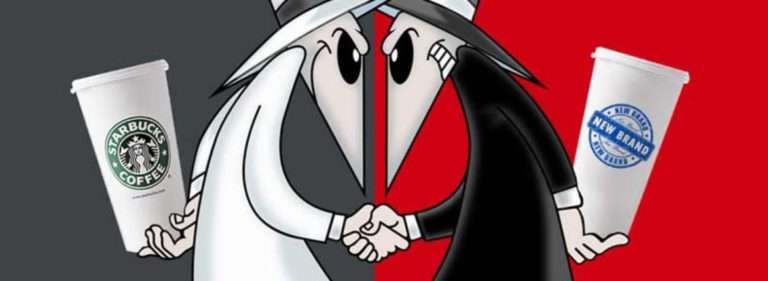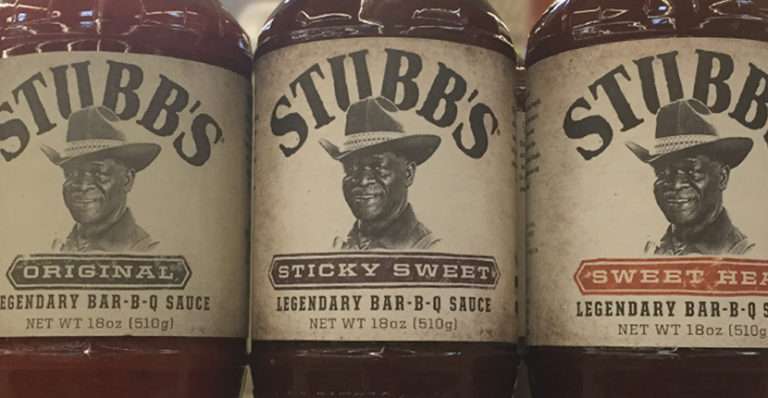Oct 25, 2023
Great Brands Leverage Food & Beverage Success
Great Brands: Examples of Iconic Food Brand Growth

In the ever-evolving world of food marketing, some great brands have stood the test of time, becoming household names and icons of their respective industries. These brands didn’t achieve their status overnight; instead, they followed a recipe for success that involved innovation, clever marketing strategies, and a deep understanding of their target audience. When you aspire to be great, it helps to explore historical examples of iconic food brands and the key ingredients contributing to their growth.
1. Coca-Cola – The Classic Refreshment (1886)
When John Pemberton created Coca-Cola in 1886, little did he know that he was giving birth to one of the most recognized brands globally. Coca-Cola’s success can be attributed to several factors, including its unique formula, which was initially marketed as a medicinal tonic. However, the company’s brilliant marketing campaigns, such as the iconic Santa Claus image, helped establish Coca-Cola as a symbol of refreshment and happiness. The brand’s ability to adapt and resonate with consumers over the years has made it a classic in the beverage industry.
2. McDonald’s – The Fast Food Pioneer (1955)
Ray Kroc’s acquisition of the original McDonald’s restaurant in 1955 marked the beginning of a fast-food revolution. McDonald’s success hinged on consistency, affordability, and speed of service. The creation of the famous Golden Arches and the introduction of the Big Mac and Happy Meal contributed to its worldwide appeal. McDonald’s also leveraged clever marketing strategies, such as the “I’m Lovin’ It” jingle, to connect emotionally with customers, making it an enduring icon in the fast-food industry.
3. Hershey’s – The Sweet Sensation (1894)
Milton Hershey’s dream of making chocolate accessible to everyone led to the founding of The Hershey Company in 1894. His innovative use of milk chocolate made it more affordable and appealing to the masses. The construction of Hershey, Pennsylvania, as a company town and the introducing of Hershey Chocolate Kisses contributed to the brand’s growth. Hershey’s philanthropic efforts, including creating the Milton Hershey School, added a layer of goodwill, making Hershey’s a beloved and iconic chocolate brand.
4. Kellogg’s – The Breakfast Cereal Pioneer (1906)
W.K. Kellogg’s invention of cornflakes in 1906 marked the start of the breakfast cereal industry. Kellogg’s introduced many great brands and a new way to start the day and invested heavily in marketing and packaging. Introducing mascots like Tony the Tiger for Frosted Flakes and Toucan Sam for Froot Loops created memorable brand associations. Kellogg’s also capitalized on health trends, promoting the nutritional benefits of cereal, which played a crucial role in its growth.
5. PepsiCo – The Rival that Persisted (1965)
While Pepsi was initially an underdog in the cola wars, it managed to carve a niche by targeting a younger demographic with the “Pepsi Generation” campaign in the 1960s. Pepsi’s introduction of the Pepsi Challenge, a blind taste test, challenged Coca-Cola’s dominance and led to a surge in popularity. Acquisitions of popular snack brands like Frito-Lay and Quaker Oats diversified PepsiCo’s product portfolio, ensuring its continued growth and relevance.
These examples of iconic, great brands showcase that growth and success require a blend of innovation, marketing prowess, and an understanding of consumer preferences. While the food industry has evolved significantly over the years, these brands have demonstrated their ability to adapt and remain relevant in an ever-changing marketplace.
The Recipe for Success: How A Great Brand Flourishes in the Food and Beverage Industry
In today’s competitive landscape, food industry professionals like those at NewPoint Marketing understand the importance of the critical ingredients that make great brands and drive success. By crafting compelling brand strategies, conducting market research, and leveraging digital and traditional marketing channels, they help food brand business owners and marketing professionals achieve their primary goals of growing sales and gaining market share. Just as these iconic brands have done, the recipe for success in the food industry continues to evolve, and those who embrace change are well-positioned for the next challenge.
Building great brands is more than crafting a catchy logo or a memorable jingle in the ever-evolving world of the food and beverage industry. It’s about creating a deep connection with consumers, understanding their needs, and delivering exceptional value. Great brands in this industry share some common ingredients that allow them to flourish and stand out amidst fierce competition.
- A Strong Brand Identity: A strong brand identity is one of the foundational elements of a great food and beverage brand. This goes beyond a visually appealing logo; it encompasses the entire brand experience. Companies like Coca-Cola and McDonald’s have successfully built instantly recognizable identities that evoke strong emotions. For example, Coca-Cola’s red and white logo is not just about colors; it’s about happiness, refreshment, and the joy of sharing moments. McDonald’s iconic golden arches represent not just fast food but also a sense of familiarity and comfort.
- Consistency Across All Touchpoints: Consistency is key in branding. Great food and beverage brands maintain a consistent image and message across all touchpoints, from packaging and advertising to social media and customer service. This consistency helps build trust and reliability in consumers’ minds.
- Exceptional Product Quality: No amount of marketing can compensate for subpar product quality. Great brands in the food and beverage industry prioritize the excellence of their products. They invest in research and development, quality control, and customer feedback to improve their offerings continuously.
- Authenticity and Transparency: In an era of heightened consumer awareness, authenticity and transparency have become paramount. Consumers want to know where their food comes from, how it’s made, and what ingredients are used. Brands like Whole Foods and Chipotle have succeeded by emphasizing their commitment to quality, sustainability, and transparency in sourcing.
- Engaging Content and Storytelling: Telling a compelling story is an effective way to connect with consumers. Great brands in the food and beverage space use storytelling to showcase their products and create an emotional connection with their audience. They share stories about their origins, the people behind the brand, and the journey of their products.
- Social Media and Digital Marketing: A solid online presence is crucial in today’s digital age. Food and beverage brands leverage social media platforms, websites, and digital advertising to engage consumers. They create visually appealing content, share recipes, and encourage user-generated content, turning customers into brand ambassadors.
- Understanding Consumer Trends: The food and beverage industry constantly evolves with changing consumer preferences. Great brands stay ahead of the curve by closely monitoring industry trends. They adapt their products and marketing strategies to align with health and sustainability trends, such as the rise of plant-based foods and eco-friendly packaging.
- Innovation and Adaptability: Flexibility and innovation are essential for long-term success. Great brands don’t rest on their laurels; they continually innovate to stay relevant. Whether introducing new flavors, responding to changing dietary preferences, or embracing new technologies, adaptability is a hallmark of thriving brands.
- Strong Partnerships: Collaborations and partnerships can be a powerful tool for growth. Food and beverage brands often collaborate with influencers, restaurants, and other brands to expand their reach and tap into new customer segments. These partnerships can create buzz and excitement around the brand.
- Customer-Centric Approach: Ultimately, great brands put their customers at the center of everything they do. They actively seek feedback, listen to their customers’ needs, and improve based on that feedback. This customer-centric approach helps retain loyal customers and attracts new ones through positive word-of-mouth.
Building great brands in the food and beverage industry is a complex recipe involving creativity, quality, authenticity, and adaptability. Brands that prioritize these elements, stay connected with consumers, and keep evolving are the ones that not only survive but thrive in this competitive landscape. As the industry evolves, the future belongs to those who can adapt while staying true to their brand’s core values and identity.
Contact NewPoint Marketing today for a free consultation on what it takes to evolve your brand from good to”GREAT!”





